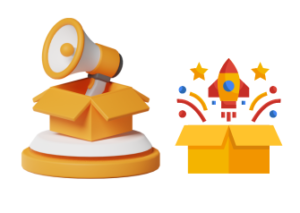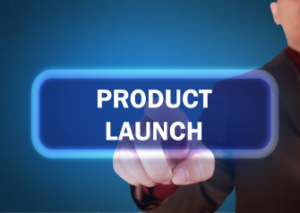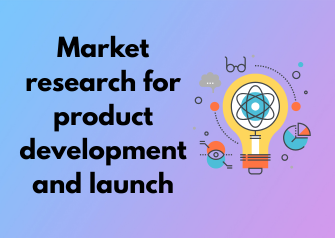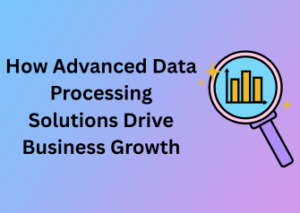The True Starting Line: Identifying Your Audience’s Needs
When it comes to market research, the very foundation of success is understanding your audience. Think about it: before crafting a product, how do you even know you’re solving a real problem or fulfilling an actual desire? This is where identifying your audience’s needs becomes the first and most important step. Let’s break this down into clear and actionable points so you’re starting not just on firm ground, but ahead of the competition.
Where to Begin? Listen and Observe
It might seem like a no-brainer, but listening to your potential customers is often overlooked in the rush to develop a “cool idea.” Observing your target audience is invaluable because it allows you to step into their shoes. Here’s how you can start:
- Engage with online communities: Platforms like Reddit, Facebook groups, and industry-specific forums are goldmines of discussions where people openly share their frustrations, wishes, and unsolved problems.
- Conduct one-on-one interviews: A personal touch often uncovers pain points you won’t find in public discussions. Ask open-ended questions to get to the core of their experiences.
- Review existing trends: Study industry reports, social media trends, and news sources to grasp what’s currently capturing attention in your target market.
Ask: What Are Their Pain Points?
At the heart of identifying needs is understanding pain points, or the specific problems customers face. Consider these tips:
- Don’t generalize—go specific. For example, instead of saying “customers struggle with time management,” dig deeper and find out if it’s balancing work with family, meeting deadlines, or managing team projects causing the stress.
- Think about frequency and intensity. Ask yourself, “Is this problem big enough that they’d jump at a solution?”
Once you pinpoint pain points, your product begins to take shape—not just as something “nice to have,” but as a solution people feel they can’t live without.
KYC (Know Your Customer) Profiles
Ever heard of KYC in banking? Think of this as the same concept but for your audience. Create detailed profiles, or buyer personas, to visualize who you’re building for. Include criteria like:
- Age, gender, occupation, income level.
- Hobbies, interests, and purchasing habits.
- Values, challenges, and goals.
This helps ensure that every product decision you make aligns with the actual people who’ll be using it.
Empathy Is the Secret Sauce
One often-overlooked aspect of identifying needs is tapping into empathy. By truly understanding what your audience feels and experiences on a daily basis, you go beyond demographics and into the heart of customer-centric design.
Beyond the Basics: Decoding Competitor Strategies
So you’ve got a fantastic product idea brewing, but before you dive headfirst into the fray, it’s time to take a closer look at the competition. And no, this isn’t just about stalking their Instagram or Facebook pages (though let’s admit it, we all do that)—it’s about deeply understanding what’s working for them, where they might stumble, and how you can carve out your own unique space in the market. Sounds intimidating? Don’t sweat it. Let’s crack the code together!
What’s Really Happening Out There?
Think of competitor research as your investigative mission. It’s not about copying; it’s about learning. Every product on the market is telling you a story about the customers you are trying to attract. Start by identifying your direct competitors—those offering something similar—and indirect competitors, who might solve the same problem in a different way. Broadening your scope helps you see the full picture.
From there, look at their products or services: What features do they prioritize? Are they solving problems you might’ve overlooked? What’s their price point? Compare it to your expectations and goals. Dig into their branding, too. How do they communicate? What kind of customers are they appealing to? Press pause and really think about this—consumer perception is often shaped as much by presentation as it is by the actual product.
Read the Room: Where Can You Shine?
Once you’ve done your homework, highlight areas where you can set your product apart. Is there a gap no one is addressing? Maybe competitors are targeting tech-savvy clients, but overlooking a simpler demographic who still need the product. Or perhaps their designs are overly complex but don’t solve basic issues that matter most to users. Being different doesn’t mean being complicated—it’s about innovating in ways that make your brand stand out. Ask yourself: how can you bring something distinct, more efficient, or more user-focused to the table?

Pro Tip: Let the Data Do the Talking
Why operate on hunches when cold, hard data is your best friend? Tools like SEMrush, Ahrefs, and Sprout Social give you a backstage pass to your competitors’ online strategies. What keywords are they targeting? Which content is resonating with their audience? Use analytics to reverse-engineer their successes and avoid their pitfalls. Don’t stop there—browse reviews, testimonials, and discussion forums. Customers are never shy about sharing what’s missing.
The Art of Differentiation
It’s easy to get caught up in what others are doing well, but don’t let their shine overshadow your own creativity. Remember: differentiation is a superpower. Customers aren’t just buying features—they’re buying a brand and an experience. Your mission is to offer something distinct that reflects your values and vision. Whether it’s a superior user interface, a more eco-friendly design, or unbeatable customer service, make sure your unique selling proposition (USP) feels authentic and resonates.
Feedback Over Assumptions: Validating Ideas through Real Users
Let’s face it: no matter how brilliant your product idea seems on paper, the ultimate verdict lies with the people who will actually use it. That’s why validating your product ideas with real users is a step you simply cannot afford to skip. Assumptions might feel convincing, but they lack the grounding of authentic feedback that can make or break a product. So, how do you effectively gather this precious input? Stick with me — I’ll lay it all out for you!
Why You Should Bring Real Users Into the Process Early
Think of real users as your co-pilots. They’re the ones steering your product in the right direction by showing you what works, where they feel lost, or what they’d love to see improved. When you rely on assumptions alone, you risk developing a product that doesn’t meet their needs, or worse, gets completely ignored. It’s not about second-guessing your intuition; it’s about building a bridge between your vision and their reality.
How to Start Validating Ideas with Real Users
Now, you might be wondering, “Where do I even find these real users?” Great question! Here are some simple yet powerful methods to get started:
- Tap into your existing audience: If you already have customers, subscribers, or followers, reach out to them! Invite them to share their thoughts through direct interviews, focus groups, or even casual conversations.
- Dive into online forums and communities: Platforms like Reddit, niche Facebook groups, or hobby-specific forums are fantastic for connecting with people who match your target demographic.
- Use testing platforms: Services like UserTesting, or similar tools, help you recruit individuals who align with your buyer persona and give structured feedback on your concepts or prototypes.
What Feedback Are You Looking For?
Not all feedback is created equal. When validating your ideas, you want to seek out actionable insights rather than broad opinions. Encourage your testers to share:
- What they like or dislike about your concept.
- The specific problems your idea solves for them (or fails to solve).
- Suggestions for improvement or tweaks they’d like to see.
- Any confusion around the product’s purpose or functionality.
Dig deeper with follow-up questions — sometimes the best insights come from probing responses like “I don’t know, it just doesn’t click for me.”
Quick Tips for Collecting Useful Feedback
Here’s where the rubber meets the road! To make the most of user validation:
- Keep it open-ended: Avoid framing questions in ways that lead to “yes” or “no” answers. For example, instead of asking “Do you like this feature?” try “How would you feel about using this feature? Why?”
- Embrace criticism: The most valuable feedback often comes from criticism — it’s not personal, it’s progress!
- Always test your biggest assumptions: If your product hinges on a specific feature being useful, ask real users to test that feature early on.
Data That Counts: Leveraging Surveys, Polls, and Online Tools
When it comes to making smart decisions, let’s face it—guesswork rarely works. If you’re stepping into the realm of product development, odds are you’ve heard the buzz around surveys, polls, and online research tools. But here’s the thing: these aren’t just trendy buzzwords. Done right, these tools are your secret weapon to truly understanding your market, and today, we’re diving into how to use them like a pro
.
Why Surveys Are Your North Star
Surveys play a pivotal role in gaining actionable insights. They offer a structured way to collect opinions, preferences, and pain points directly from your audience. The beauty? You can ask precisely what you need to know.
When creating a survey, keep it short and laser-focused. Ask open-ended questions sparingly to allow for rich, qualitative feedback, but don’t overlook structured, multiple-choice questions for easy data analysis. For example:
- Yes/No Questions: “Would you pay for a subscription-based version of our product?”
- Scaled Questions: “How likely are you to recommend this product to others on a scale of 1 to 5?”
- Open-Ended Questions: “What’s one feature you believe we’re missing?”
The good news? Platforms like SurveyMonkey and Typeform make creating gorgeous surveys a breeze!
Short, Sweet, and Interactive: The Power of Polls
Sometimes, you don’t need an entire survey to get meaningful insights. Polls are perfect for getting quick feedback on focused questions. They’re especially effective on social media platforms where your audience is already engaged. A good poll question could be:
- “Which color do you associate with our brand: Red, Blue, or Green?”
- “Would you prefer a monthly subscription or a one-time purchase?”
Apps like Instagram Stories, Twitter, and LinkedIn have built-in polling tools, making it easy for people to vote with just one click. The immediate feedback is invaluable and highly shareable, giving you visibility along with insights.
Online Tools and Platforms You Can’t Ignore
Now, let’s talk about online tools. Gone are the days of flying blindly. Today, you have access to a plethora of software that can help you gather and analyze data like a seasoned marketer. Meet a few fan favorites:
- Google Forms: Free, flexible, and linked to your Google account for easy sharing and organization.
- Hotjar: Want to know how visitors navigate your website or prototype? Use this tool for heat maps, session recordings, and behavior tracking.
- Qualtrics: If enterprise-level data is your game, Qualtrics provides highly customizable survey and research tools.
Each of these platforms lets you slice, dice, and understand your audience’s preferences with precision. The key is to choose tools that work for your budget and align with your goals.
Actionable Pro Tips
Before you dive into surveys, polls, and tools, set yourself up for success by following these tips:
- Start with Objectives: Know the purpose behind your research. Are you validating a feature? Gauging price points? Prioritize your questions.
- Avoid Overload: Respect your audience’s time. Short, focused interactions lead to higher response rates.
- Analyze, Don’t Just Collect: Raw data is great, but insights are everything. Look for patterns, trends, and actionable takeaways from your research.
Shaping the Future: Prototyping with Purpose
When it comes to launching a groundbreaking product, you can’t just skip ahead and hope for the best. It’s like writing a song without playing it out loud first. Sure, it might look great on paper, but how will it resonate in the real world? That’s where prototyping steps in—a crucial stage in product development that helps you shape the future by turning ideas into something tangible and testable.
What Exactly is Prototyping?
Think of prototyping as your product’s first true dress rehearsal. It’s a preliminary version—a physical or digital model—designed to simulate your end product. This stage is about transforming your concept from abstract to actionable, making your vision easier to assess, discuss, and improve. Whether it’s a clickable app wireframe or a physical mock-up, prototyping brings your idea into the spotlight in its rawest, most adaptable form.
Why is Prototyping Crucial?
Let’s face it: no one gets it 100% right the first time. Prototyping exists so you can refine your idea before you hit the shelves or app store. Here’s why it’s such a big deal:
- Visualizing Your Idea: A prototype is the closest you’ll get to seeing your product in action before it’s finished. It bridges the gap between “vision” and “reality.”
- Identifying Weak Points: It’s easy to romanticize a concept when it’s just theoretical. A prototype offers clarity, exposing issues or inefficiencies before they become expensive mistakes.
- Stakeholder Buy-In: Whether you’re pitching to investors or seeking approval from your internal team, a prototype helps people grasp your vision and get on board more quickly.
- User Insights: It lets you test your product on real people in real scenarios. Honest feedback at this stage is invaluable for improvement.
How to Approach Prototyping with Purpose
Diving into prototyping means doing it thoughtfully. Here’s how you can get it right:
- Keep It Simple: You’re not aiming for perfection right now. Start with a low-fidelity prototype, something basic that highlights just the core features or functionalities. This could be as simple as sketches, cardboard models, or basic app wireframes.
- Build for Feedback: Make it easy for people to test, critique, and explore. Whether they’re clicking around a digital interface or interacting with a physical prototype, smooth user interaction is key to gathering insights.
- Collaborate Early and Often: Show your prototype to multiple stakeholders. Engineers, designers, marketers, and end users all see value differently. Getting diverse feedback ensures you’re not overlooking anything major.
- Iterate Without Fear: Don’t be afraid to scrap parts of your design or go back to the drawing board. Prototyping allows for flexibility, so make the most of it!
Testing the Waters: Soft Launch Insights and Refinements
So, you’ve developed your product, poured your heart into it, and are excited to get it out into the world. Here’s the thing – throwing your product straight into the deep end with a big, loud launch might seem exciting, but it’s risky. Why? Because no matter how much planning or research you’ve done, the real test of your product’s readiness comes when it meets actual users. That’s where the magic of a soft launch comes in. Not sure what that is? Let’s dive right in!
What Exactly is a Soft Launch?
Think of a soft launch as a dress rehearsal for your product’s debut. Instead of creating a big splash all at once, you introduce your product to a specific, smaller audience to gather feedback and iron out potential issues. Whether it’s regional, demographic-based, or a limited-time rollout, this controlled approach lets you “test the waters” before full-scale exposure.
Why is a Soft Launch Important?
Imagine investing time, energy, and resources into a full-blown launch, only to realize users find your app complex to navigate, or your pricing doesn’t sit well with your target audience. Ouch! With a soft launch, you gain the opportunity to:
- Identify and address bugs or technical errors that might have slipped through internal testing.
- Observe how users interact with your product in real-world scenarios.
- Learn what features ignite excitement versus those that receive a lukewarm reception.
- Test pricing strategies, marketing messages, and overall positioning without risking your reputation.
Practical Steps for a Successful Soft Launch
You’re probably wondering, “How do I make sure my soft launch sets me up for success?” Good question! Here’s a roadmap to guide you:
-
- Choose the Right Test Audience: Select a group of users that represent your ideal customer. It could be a specific geographic region, a niche market, or an exclusive beta-testing user base. These people should mirror your target market but on a smaller scale.
- Communicate Clearly: Be transparent with your soft launch audience. Let them know this is a preliminary phase, and their feedback is valuable in shaping the final product. Transparency builds trust!
- Set Clear Goals:
Define what you hope to learn during the soft launch. Are you testing usability? Feature popularity? Market demand? Having measurable objectives will make evaluating the results much easier.
- Observe and Evaluate: Use analytics tools to track user behavior, gather feedback via surveys, and pay close attention to patterns or pain points your audience reports.
- Iterate, Don’t Hesitate: Once you’ve gathered insights, focus on refining your product. Don’t be afraid to pivot if needed – better to make changes now than after a full launch.
Turning Insights into Gold
The real value of a soft launch lies in the treasure trove of insights it provides. It’s not just about identifying bugs or technical hiccups but understanding how your product fits into your audience’s lives. For instance, maybe your new app’s key feature isn’t as intuitive as you thought it’d be, or perhaps a feature you downplayed is stealing the show – that’s priceless information!
Staying Ahead: Analyzing Post-Launch Data for Market Position
Congratulations, your product is officially launched! But guess what? The work doesn’t end here. In fact, the post-launch phase holds just as much importance as all the hard work you’ve poured into development and pre-launch efforts. Let’s dive into why analyzing post-launch data is the secret weapon to not only maintaining but also strengthening your market position.
Why Post-Launch Analysis Matters
Imagine your product is like a new plant you’ve just transferred to the garden. Launching it is just the beginning; now you need to monitor its growth, look for signs of healthy development, and adapt to ensure it thrives. Post-launch data acts as the sunlight and water that help you make informed decisions moving forward. It gives you actionable insights into what’s working, what’s falling flat, and where opportunities for growth can be uncovered.
Where to Start: Key Metrics to Monitor
If you’re wondering “What exactly am I supposed to be tracking?”, don’t worry—we’ve got you covered. Keep a close eye on these top metrics:
- Sales Figures: Tracking revenue and unit sales trends will immediately highlight if your pricing and value proposition are resonating with your audience.
- User Engagement: Monitor how customers are interacting with your product. Are they actively using it? Or does engagement drop after their first try?
- Customer Retention Rate: If customers are sticking with your product over time, it’s a good indication that it’s meeting their needs. High drop-off rates? Time to troubleshoot.
- Feedback and Reviews: Keep reading those reviews! Customer feedback will reveal priceless nuggets about user experience, pain points, and your product’s functionality compared to expectations.
Using Data To Identify Market Opportunities
Post-launch data isn’t just about addressing problems—it’s also a goldmine for spotting potential opportunities. Maybe a majority of your users are gravitating towards a specific feature you didn’t expect to be popular. Leverage that demand in future updates or create complimentary offerings that build on this surprising success. It’s these data-driven insights that will help you refine your strategy, stay ahead of competitors, and stay indispensable to your customers.
The Role of Competitive Analysis
While you’re mining your own data, don’t forget to keep an eye on competitors. Post-launch is an excellent time to compare your performance against theirs. Are there reviews praising your rival for something your product lacks? Maybe their marketing strategy is cutting through the clutter in ways yours isn’t. Use these comparisons to make adjustments and stay on the cutting edge.
Data Tools Are Your Best Friend
Crunching numbers and drawing actionable insights can feel overwhelming at first, but luckily there’s a buffet of tools out there to help. Platforms like Google Analytics, Mixpanel, and Hotjar can help you track customer behaviors online, while feedback aggregation tools like SavvySurvey streamline the process of organizing and interpreting feedback.











